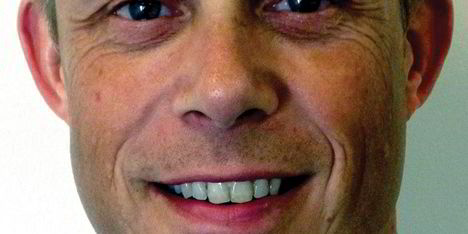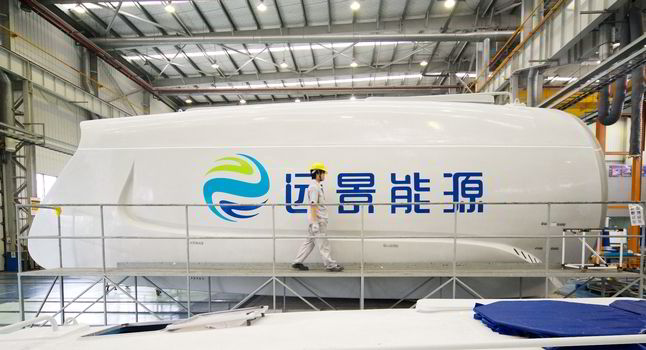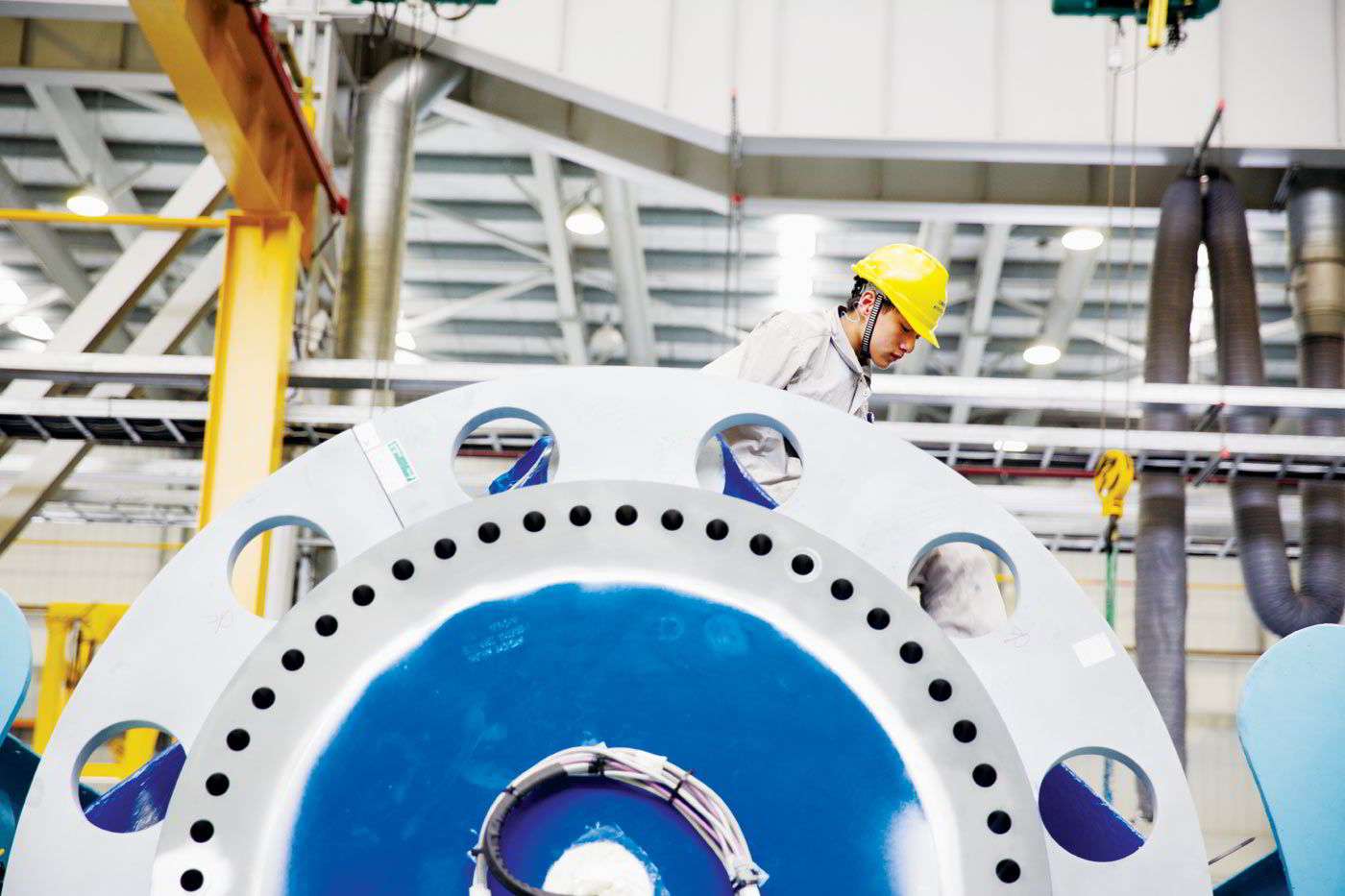Envision has grown exponentially in China’s booming wind sector since it was founded in 2007. Domestic success helped it to crack the global turbine OEM top ten list in 2014, on shipments of roughly 2GW, taking it to ninth place in MAKE Consulting’s annual rankings.
Latest figures from the Chinese Wind Energy Association show that Envision shipped 1GW in the first half of 2015, putting it on track to take third or fourth place in China by the end of the year.
This year has also seen Envision step up its international profile, with an 11MW turbine order in Chile secured in September adding to earlier deals there and in Mexico.
But the company’s most eye-catching leap was its entry into the European market via its July purchase of a 25MW onshore project near Eskilstuna, Sweden — with a promise that the deal would be the first of many on the continent.
Executive director Felix Zhang tells Recharge the group cannot consider itself a true global force unless it can carve out a “strong position” in Europe. He is reluctant to put a figure in megawatts on that, but says the company “would definitely like to be one of the top five players” in the European market. “That puts us with names like Siemens, Vestas, Enercon. That gives us a lot of work to do but we’ll try to achieve it.”
The Eskilstuna wind farm — due to be operational by September next year — is designed to act as a showcase window for Envision’s technology, with the company installing the full range of machines it will sell in Europe, including its latest 2.3MW EN2.3-115 and 3MW EN3-120 models. A prototype of the latter was installed at the Danish National Test Centre in Østerild in July, while its 3.6MW EN-128 two-bladed prootype has been turning at nearby Thyboron since 2012.
The obvious question is: Why on earth does Envision think it can build a significant position on a continent already boasting at least half a dozen world-class wind turbine OEMs, complete with production plants, local support operations and decades-long track records?
The record of China’s turbine makers in Europe has been modest at best, even for Chinese number-one Goldwind, which has seen success in other overseas markets such as the Americas.
Envision Energy’s head of EMEA business development, John Childs, an industry veteran and a former Vestas and Siemens executive, insists the company can offer something distinct to give it a fighting chance against his old employers.
Envision has built its business in China with a focus on the low-wind sector, which fits with the needs of European developers, “so in terms of machine competitiveness, we definitely have a number of turbines that can compete very easily with the European OEMs”, he says.

Envision sees itself as a software-led business, with ambitions to be the “Google or Amazon of the ‘energy internet’”, in the words of founder Zhang Lei.
Envision is already a significant force in wind farm operations, with about 10GW of assets managed through Wind OS in North America, Europe and Latin America.
The company points out that it is already managing wind and solar fleets for big operators, including yieldcos, so has plenty of expertise to offer users of its own turbines.
“Our turbines can really react to conditions very quickly, so our cost of energy through our software is where we have a key competitiveness,” says Childs.
“We want to really work with our customers around output and yield generation, whereas a lot of suppliers spend a lot of energy on the sales process, and perhaps less on the optimisation side. So I think that’s an area — a gap in the market — that’s rarely a focus.”
Childs is keen to stress that Envision’s foray into Europe was not a spur-of-the-moment decision but the result of years of careful preparation — which included setting up a global innovation centre in Silkeborg, Denmark, whch is staffed by about 40 engineers, including veterans from Siemens, Vestas and Gamesa.
“The company has been working on entering the European market for the past three and a half years,” Childs says. “So there have been many discussions on what the needs are from some customers in those markets.
“Our turbines are now fully certified machines, in terms of the design criteria. They are also fully compliant to European [safety standards]. They’re the two factors that give our customers the comfort that we’re ready to supply them with a solution.”
Childs points out that thanks to the Swedish showcase and prototype in Denmark “it’s not as if they can’t see our hardware. They’re now being erected and our customers are very happy that they can actually see a turbine that is not only very successful in China, but they can also see it operating in Europe”.
The company could even consider a production plant in Europe “if the economics make sense”, Childs confirms. But he adds: “You’ve got to understand that Envision’s supply chain [uses] a lot of European suppliers anyway. We use proven technologies from the likes of LM Wind Power for blades, Winergy gearboxes, ABB and Siemens.
“We’re buying from proven European technology suppliers. So in terms of production, it would be very easy for us to have a European facility. But it’s just a matter of economics. If there’s a particular market that is strong and sound for the foreseeable future, we could look at those markets, especially if they need local content. We can certainly tap into our supply chain and have assembly facilities within those markets,” Childs adds.
Envision has more up its sleeve than technology, however, as it launches its bid to make inroads in Europe.
The company comes with all the financial muscle of a growing Chinese business, and boasts a 10bn yuan ($1.6bn) credit line from China Development Bank. That gives it options to make deals above and beyond straight supply contracts, as it has already shown with its Swedish project purchase.
“The financial capabilities we have mean we can be flexible,” says Zhang. “In some cases we’ll be turbine supplier, in some we’ll be an investment partner.”
Envision’s ambitions do not stop with the onshore sector as it considers its prospects in what is also the world’s largest offshore wind market. The company already produces 3.6MW and 4MW offshore turbines in China, and has emerged as a serious player in the fledgling Chinese sector. But Envision stresses it will think carefully before making over any move offshore in Europe.
“We are looking at a few opportunities, but we have to be cautious here. We would need to do our homework and make sure we’re managing the risk,” Zhang says.
Solar is also on Envision’s European agenda, Childs confirms. “The ambition for the solar path of the business is definitely global. And our software systems will operate wind, solar and even hydro plants. So we definitely have the platform to expand into the solar sector in Europe.”


